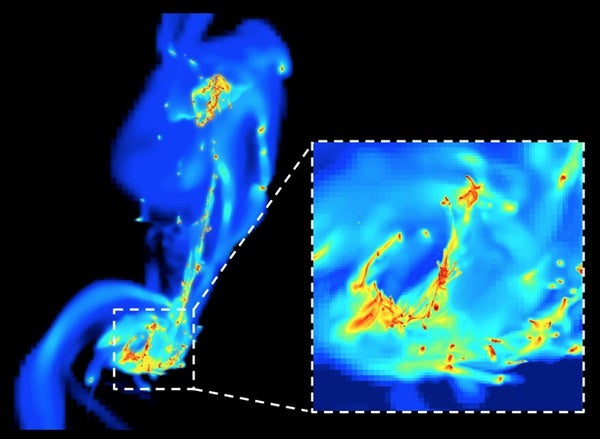Stars form when the gas inside galaxies becomes dense enough to collapse, usually under the effect of gravitation. When galaxies merge however, this increases the random motions of their gas-generating whirls of turbulence, which should hinder the collapse of the gas. Intuitively, this turbulence should then slow down or even shut down the formation of stars, but in reality astronomers observe the opposite.
The new simulations were made using two of the most powerful supercomputers in Europe. The team, led by Florent Renaud of the AIM institute near Paris, modeled a galaxy like our Milky Way and the two colliding Antennae galaxies.
For the Milky Way-type galaxy, the astrophysicists used 12 million hours of time on the supercomputer Curie, running over a period of 12 months to simulate conditions across 300,000 light-years. For the Antennae-type system, the scientists used the supercomputer SuperMUC to cover 600,000 light-years. This time, they needed 8 million hours of computational time over a period of eight months. With these enormous computing resources, the team was able to model the systems in great detail, investigating details that were only a fraction of a light-year across.
By simulating the impact of the Antennae collision and merger of material 1,000 times less massive than anything attempted before and comparing this with the Milky Way model, Renaud and his team were able to demonstrate that the collision changes the nature of the turbulence in the galactic gas. Instead of whirling around, the gas enters a state where compression is more likely. So when two galaxies collide, this generates an excess of dense gas that collapses into stars, and both galaxies experience a starburst.
“This is a big step forward in our understanding of star formation, something only made possible by the similarly major and parallel advances in computing power,” said Renaud. “These systems are helping us unlock the nature of galaxies and their contents in ever more detail, helping astronomers to slowly assemble their complete history.”










